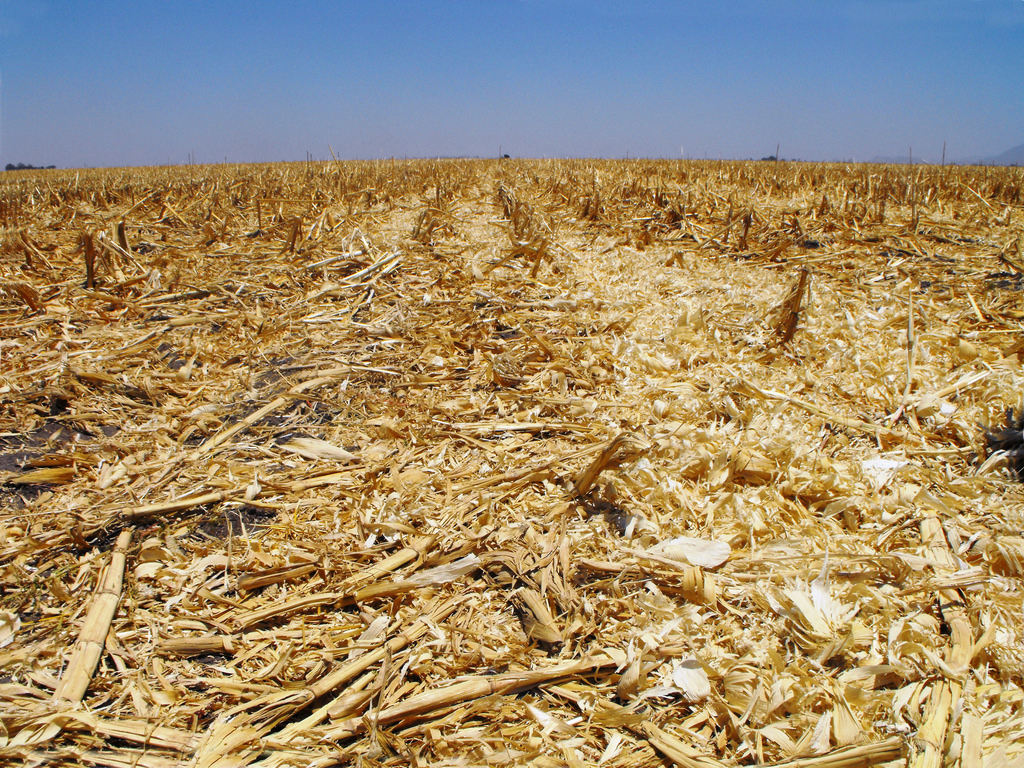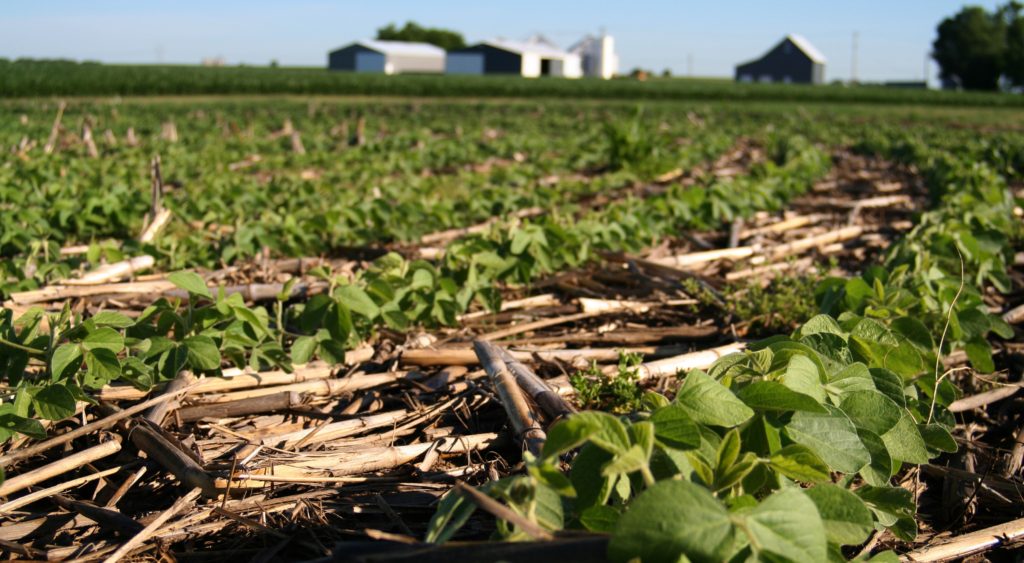
Moving toward sustainable biofuel production: evaluating economic and environmental trade-offs

The agricultural sector is responsible for roughly thirty percent of global anthropogenic emissions. This is largely due to the loss of soil organic matter from the conversion of native ecosystems to agroecosystems and from the manufacturing and use of chemicals, like nitrogen based fertilizers. However, with effective management and sustainable practices, agriculture has the potential to be a key player in mitigating climate change. Soil organic matter can be rebuilt through practices such as conservation tillage, and using cover crops and food waste to enhance carbon sequestration. While leaving crop residues on fields can help retain soil moisture and protect soils from erosion, an alternative use for these materials is in the production of biofuels, another avenue for reducing net carbon dioxide emissions.
The sustainable nature of food stock (e.g., corn grain, sugarcane) use in biofuel production has been heavily criticized. These “first-generation biofuels” result in indirect greenhouse gas emissions and biodiversity loss as a result of land use change and can potentially threaten food security. “Second-generation biofuels,” which come from crop residues (e.g., corn husks), can address these problems. However, their current use in biofuel production is hindered by market structure and technological limitations.
By piggy-backing on existing infrastructure, using marginal lands for production, and finding ways to optimize supply chains, combining both crops and their residues could be a solution for sustainably producing biofuels. To maximize the sustainable potential of biofuels, impacts of management on ecosystem processes, costs, and supply chains must be fully considered.
A hybrid approach – but what are the trade-offs?
Many things need to be taken into account when optimizing management practices for hybrid first-and second-generation biofuel production. For example, what are the ecosystem implications of removing crop residues on arable lands? How will the effects vary from farm to farm with variation in climate, soil composition, crop type, and land use history? Will the combination of first- and second- generation biofuels make sense in terms of both economical and environmental perspectives?

In a recent paper published in Applied Energy, Trung Nguyen, Keith Paustien, and co-authors took all of these factors into account. Nguyen et al. developed a high-resolution quantitative tool to support decision-making in feedstock production with a special focus on sourcing both first- and second-generation feedstocks; these are known as “hybrid” biofuel supply chains for ethanol production . To demonstrate the decision-support tool, they used a coupled simulation modeling and life-cycle assessment approach to optimize management practices of feedstock landscape for the Front Range Energy biorefinery, Windsor, Colorado, USA. This study is unique because of its incredibly high spatial and temporal resolution. Unlike other studies, they evaluated several competing design objectives that are of key interest to diverse stakeholders, managers, and scientists: feedstock costs, farm-to-refinery greenhouse emissions, and on-site nitrogen leaching.
“Our work is one of the first to demonstrate multi-objective optimization of multiple feedstock cultivation for hybrid ethanol production systems at high spatial and temporal resolutions,” commented Nguyen, a Fulbright Scholar in the Natural Resource Ecology Laboratory and Department of Soil and Crop Sciences. The authors found that using a hybrid-approach resulted in lower feedstock costs, greenhouse gas emissions, and substantially less nitrogen leaching than those of single feedstocks. How much, exactly? “Compared to the hybrid feedstock ethanol, grain-based ethanol was 1.3 times higher in feedstock-delivered costs, 1.2 times higher in GHG emissions, and 12 times higher in N leaching,” added Trung.

A tool for decision makers
The authors developed a tool that allows users to consider multiple scenarios, visualized with maps to aid in decision making. For a company like Front Range Energy, they can gain valuable insight into best management, sourcing, and growing strategies for the sustainable and cost-effective biofuel production. Ultimately, tools like these can aid in improving the efficiency of biomass supply chains and may ultimately lead to viable, larger-scale biofuel production.
Solving the climate crisis will involve a diverse portfolio of solutions to reduce human reliance on fossil fuels, sequester carbon, and transition to a low-carbon economy. A hybrid-approach of both first- and second-generation feedstocks just might be the answer in making biofuel production more environmentally sustainable and economically viable.